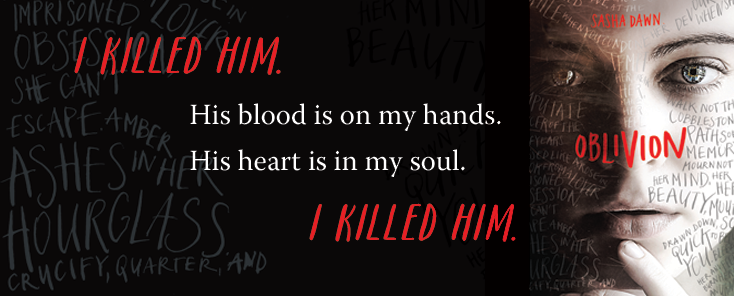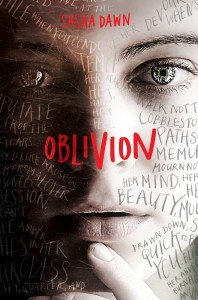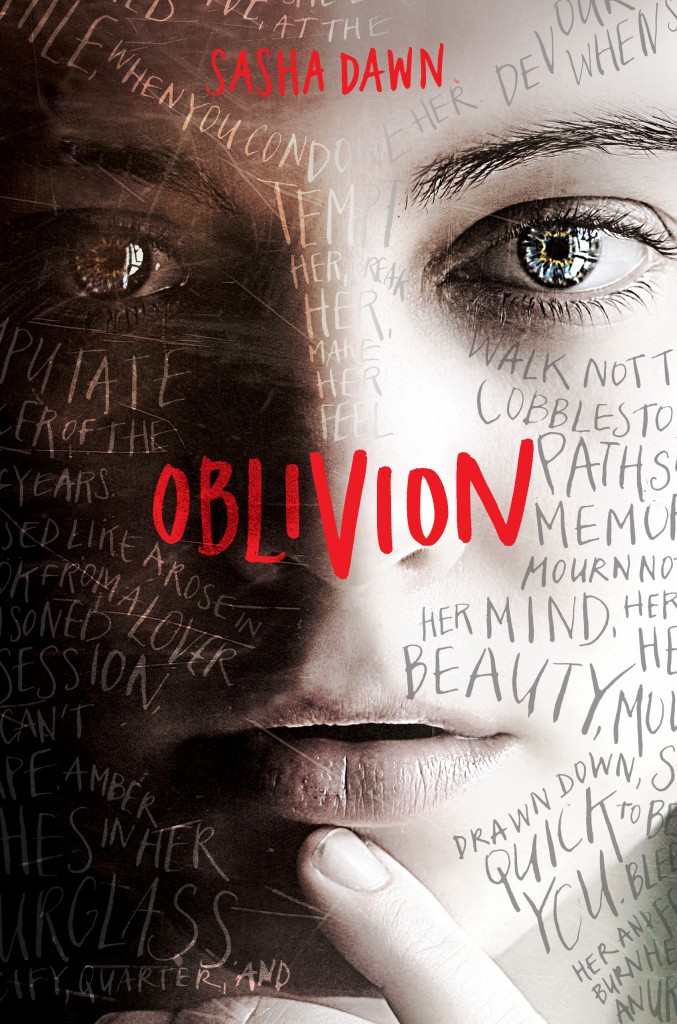Sasha Dawn | The Children’s Book Review | May 27, 2014

Conjuring a Reality Between Two Worlds
Let’s set a scene:
16-year-old Isabella has had an anxiety disorder since her parents died six years ago. She lives with her aunt, uncle, and toddler cousins in a 1906 Victorian. Aunt Vivian and Uncle Ken had purchased the place solely for the shell of the house and the land, as it has little appeal beyond its potential. The home had survived a horrific renovation in the ’60s, and they slowly set to restore it, but aside from being ugly, it’s harmless during the day. Overrun with spiders, perhaps, with which Isabella is learning to deal, but harmless.
However, at night the place takes on a different personality. Doors open and close without human assistance. Music sounds from the attic without explanation. Footsteps echo throughout the place, even though no one is walking the hallways. The day Isabella hears her name whispered over her shoulder is the day she realizes the strange occurrences are not only her imagination.
Shortly thereafter, the nightmares begin. She repeatedly dreams of being dragged off her bed and thrown down the stairs…or worse. The dreams are so vivid, so frightening, that she suspects they contain messages, and that they are related to the strange phenomena occurring in the house. But one thing she knows for certain: she has to find a way to make it all stop.
She’s new in town, so she doesn’t have many people to talk to, but she befriends two teens at the beach. They confirm her fears about the house, and even tell her of legends of its haunted past.
The activity escalates. The kids begin to wake her in the middle of the night complaining of roommates who don’t pay rent (“that girl wants to play again”), or with tales of the “white lady” singing to them and keeping them awake.
Now the paranormal events aren’t reserved to dark hours—only to times when Isabella is alone in the house with her cousins. The house shakes without reason. And the attic…sounds of shattering glass and sobbing reverberate from beyond the access panel.
Aunt Viv and Uncle Ken refuse to believe anything unusual is going on. They’ve never stood witness to anything strange, and they don’t believe in ghosts. Isabella and the kids take to sleeping in the same bed, which means Isabella doesn’t sleep at all. Aunt Viv and Uncle Ken blame Isabella for putting crazy thoughts into their children’s heads, and they threaten to over-medicate her, as they assume her anxiety is getting worse.
The only two people who can back up her claims about the house are the teens she met on the beach, and neither of them has returned a text in weeks. She begins to wonder if she imagined meeting them, as well as imagined the phenomena. She is not sleeping, rarely eating, and experiencing the terror of nightmares. Add to this her naturally wild imagination and anxiety disorder, and she wonders if the battle is going on only in her head.
Is her house truly haunted? Or is she slowly losing her mind and poisoning the kids’ minds along the way? And when it becomes clear that Isabella’s new friends aren’t flesh and blood, she has to decide: are they ghosts? Or figments of an alternate reality taking shape in her mind?
Okay…scene set.
I’m straddling a line, here, between paranormal/horror and mystery, which maybe I shouldn’t be doing. Every time I mention paranormal and YA in the same sentence, I feel as if people wince a little. Tough to sell. Saturated market. No vampires/werewolves/shapeshifters? Probably unmarketable.
But for the sake of illustrating how I generally arrive at a thriller plot, bear with me. Maybe I tell this story in first person, present tense (my favorite for YA), and the story becomes more psychological than paranormal the moment I employ an unreliable narrator. Isabella isn’t sure she’s hearing and seeing strange things, after all, and the reader can’t prove it one way or another. Strange noises can be explained away with the presence of contractors and power tools, or even the wind blowing in off the lake. Maybe the kids are feeding off Isabella’s fears and imagining it all. Or maybe, as Isabella worries, the drama really is inside her head. Maybe she’s going crazy.
If I were to write this tale, I’d have to research hauntings, of course, and children who grow up with surrogate parents, and anxiety issues and medications. Assuming I’m comfortable gathering this information, there are few things I’ll look at to see if I have the makings of a YA psychological, suspenseful thriller:
Conflict? Check.
Goal? Check.
Motivation? Check.
Teenaged protagonist? Check.
Teenaged situations? Even if they’re in the form of possibly imaginary friends… Check.
Element of fear? Check.
Yeah. This might work.
Thoughts? How do readers feel about psychological suspense? Paranormal thrillers? Should the two worlds ever mix?
About the Author

Sasha Dawn teaches college composition to America’s youth at McHenry County College and the College of Lake County. She’s drawn to suspense, the survival instinct in people, and has a crush on Thomas Jefferson. She lives in a suburb of Chicago.
 Oblivion
Oblivion
Lisa McMann’s Dead to You meets Kate Ellison’s The Butterfly Clues in a psychological thriller full of romance, intrigue, and mystery.
One year ago, Callie was found in an abandoned apartment, scrawling words on the wall: “I KILLED HIM. His blood is on my hands. His heart is in my soul. I KILLED HIM.” But she remembers nothing of that night or of the previous thirty-six hours. All she knows is that her father, the reverend at the Church of the Holy Promise, is missing, as is Hannah, a young girl from the parish. Their disappearances have to be connected and Callie knows that her father was not a righteous man.
Since that fateful night, she’s been plagued by graphomania — an unending and debilitating compulsion to write. The words that flow from Callie’s mind and through her pen don’t seem to make sense — until now.
As the anniversary of Hannah’s vanishing approaches, more words and memories bubble to the surface and a new guy in school might be the key to Callie putting together the puzzle. But digging up the secrets she’s buried for so long might be her biggest mistake.
✭“Readers will feel unmoored until the last few pages of Oblivion, and that’s alright; so does the story’s narrator, Callie . . . . The book’s intensity can be overwhelming. Callie’s uncontrollable need to write—and the anxiety she feels when she can’t—is communicated as if by osmosis . . . . questions fade in the face of the incessant demands that the graphomania makes on both the characters and those turning the pages.”—Booklist starred review
Ages 14+ | Publisher: EgmontUSA | May 27, 2014 | ISBN-13: 978-1606844762
More Oblivion Blog Tour Dates
Wednesday, May 28, 2014
Thursday, May 29, 2014
Friday, May 30, 2014
Saturday, May 31, 2014
Oblivion Giveaway
Enter to win an autographed copy of Oblivion, by Sasha Dawn.
Add this book to your collection: Oblivion, by Sasha Dawn

